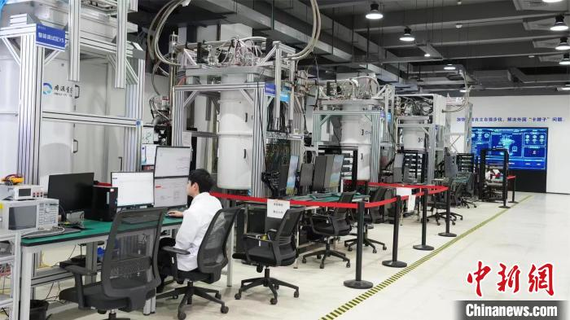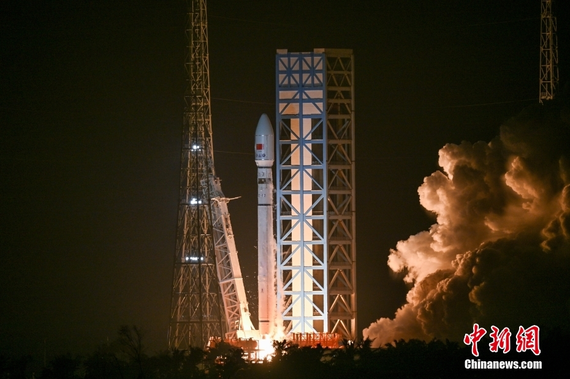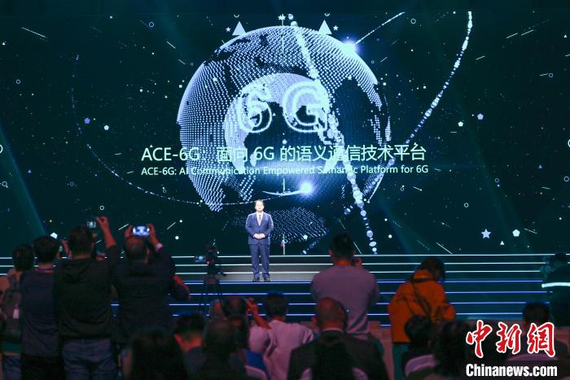Tech Frontier | Key takeaways from innovative 2024 and promising trends for 2025
(ECNS) -- This year, China has made remarkable progress in sci-tech innovation. With technological breakthroughs in quantum computing, advancements in commercial spaceflight, the rise of humanoid robots, new developments in 6G, and the rapid growth of AI-generated content (AIGC), it has been a year like no other.

Superconducting quantum computer
In June, China’s third-generation superconducting quantum computer, “Origin Wukong,” went operational in Hefei, Anhui Province, marking a significant step in the country’s quantum computing development. This milestone was further underscored by the computer's first international sale, according to the Anhui Quantum Computing Engineering Research Center.

Driven by the 72-qubit Wukong superconducting chip, the machine has already completed 270,000 tasks across 133 countries and regions, showcasing its global reach and capabilities.
On Dec. 3, China set a new domestic benchmark with the launch of "Tianyan-504," equipped with the 504-qubit "Xiaohong" chip. This new quantum computer not only surpasses the 500-qubit threshold but also aligns with international standards in key metrics such as qubit lifetime and readout fidelity, said its developer China Telecom Quantum Group.
The Tianyan-504 will be integrated into China Telecom’s "Tianyan" quantum computing cloud platform, which was launched in November 2023. The platform has already garnered attention globally, attracting users from over 50 countries with more than 12 million visits.
Commercial spacecraft launch
In January, China's Zhuque-3 reusable rocket successfully completed its first vertical return technology test at the Jiuquan Satellite Launch Center. This was followed by a 10-kilometer vertical takeoff and landing flight test in September.
These tests effectively validated several critical technologies for reusable rockets, laying the groundwork for the rocket's future maiden flight and recovery, according to its developer, LandSpace.

On Nov. 30, China's Hainan Commercial Spacecraft Launch Site completed its first launch mission with the successful liftoff of a Long March-12 carrier rocket. Located in Wenchang International Aerospace City, the site began construction in July 2022 and is recognized as China’s first dedicated commercial spacecraft launch facility.
With an investment of over 4 billion yuan (approximately $553 million), the site is the country’s first to be built specifically for commercial space missions and is operated by Hainan International Commercial Aerospace Launch Co., Ltd. (HICAL).
Humanoid robots

The year 2024 is regarded pivotal in the development of humanoid robots and embodied intelligence, with many considering it the start of their commercialization.
On April 27, Tiangong, described as the world’s first full-sized humanoid robot to run entirely on electric drive, was unveiled in the Beijing Economic-Technological Development Area.
Standing at 163 centimeters and weighing just 43 kilograms, Tiangong has already demonstrated human-like running capabilities and offers open-source compatibility to support future enhancements, broadening its potential for commercial applications.
In May, XBot-L, a full-sized humanoid robot developed by China’s Robot Era, demonstrated its locomotion versatility by walking along sections of the Great Wall of China. Standing at 5 feet, 4 inches tall, it became the first humanoid robot to achieve this feat, powered by advanced force control algorithms.
In August, Tiangong 1.2MAX made a standout appearance at the World Robotics Conference 2024 opening ceremony. Equipped with an array of advanced sensors, including visual perception, six-dimensional force, and 3D vision sensors, the robot can perform 550 trillion calculations per second.
6G
In July, a team of Chinese telecom engineers unveiled the world’s first 6G field test network, integrating both communications and intelligence. This groundbreaking network serves as a platform to explore and validate key 6G technologies, significantly lowering barriers to entry and accelerating innovation, according to the engineering team.

In November, China introduced draft guidelines for the construction of its data infrastructure, which include plans to upgrade the nation’s 5G network to 5G-A standards and to foster research and development in 6G. The commercial rollout of 6G mobile services is projected for 2030, with global standards expected to be finalized by 2025.
At the 2024 Global 6G Development Conference, Wang Zhiqin, vice president of the China Academy of Information and Communications Technology, emphasized that 6G is now entering the standardization stage, with the goal of establishing unified global standards.
Compared to 5G, 6G offers faster speeds, lower latency, and higher connection density, along with deep integration of communication, artificial intelligence, and intelligent sensing.
AIGC

In 2024, generative artificial intelligence (AI) applications have entered a phase of explosive growth. According to a report from the China Internet Network Information Center released on Nov. 30, the user base of generative AI products in China had already reached 230 million by June 2024.
The country’s generative AI industry is flourishing, with the core sector now valued at around 600 billion yuan (approximately $82.84 billion). As of July 2024, over 190 generative AI models had been registered and deployed online, offering users a wide variety of options and personalized experiences, said the report.
Beyond driving entertainment content creation, AIGC tools are being increasingly deployed across various sectors in China, broadening their scope of impact.
Looking ahead to 2025, major advancements in biotechnology and climate technology are also expected to become defining trends in China’s evolving sci-tech landscape.

